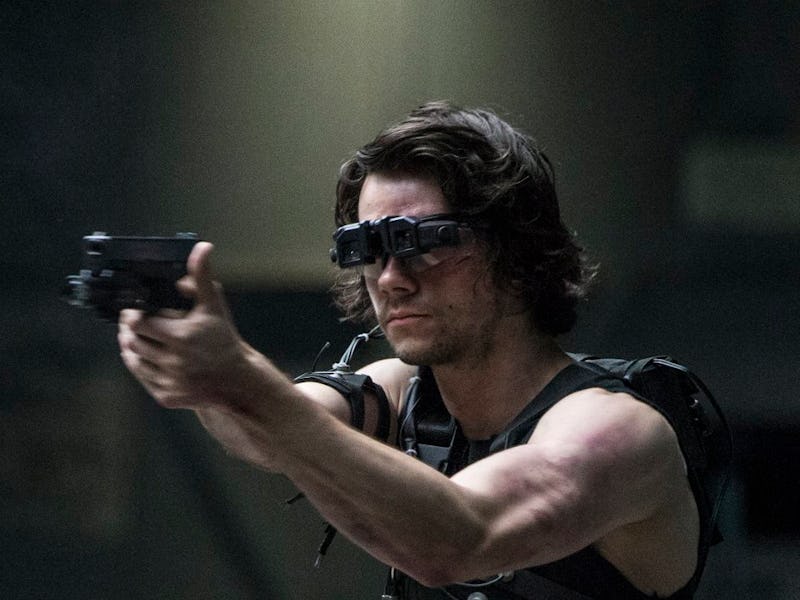One Scene in 'American Assassin' Will Make Your Skin Crawl
Ew, ew, ew, please stop!

Despite all the heroes who get captured and tortured by bad guys in action movies, more often than not viewers just see the results of said torture, and the film skips over the brutal itself process itself. But, American Assassin shows the torture, and there’s one scene in particular that you might want to look away from.
At one point in American Assassin Michael Keaton’s Stan Hurley is captured by his former protege-turned-domestic terrorist Ghost, played by Taylor Kitsch. Hurley wakes up to one hand trapped in a bench vice and his former protege waxing poetic about the injustices dealt to him by the U.S. government, the Navy, and Hurley himself. Soon, Ghost strings Hurley up with a heavy chain around his free hand and goes to work cutting Hurley with a knife, burning him with a blowtorch, and removing two of Hurley’s fingernails.
You get to see every gag-inducing second as Hurley grits his teeth and laughs through the pain, growing more manic by the second. Ghost grips Hurley’s nails with a pair of pliers, dragging each nail from its bed in slow succession.
And that shit is painful.
Commonly referred to as “denailing,” removal of the fingernails via pliers, heat, or even a wire or shard of wood inserted under the nail has been a simple but effective method of torture throughout history. Researcher and “torture historian” Nigette M. Spikes’ Dictionary of Torture claims denailing originates from “ancient North America,” and the practice is often associated with medieval torture methods.
And while fingernails might be dead material — similar to hair — the nail beds underneath and the nerves running through those nail beds and fingertips are, as you might know if you’ve ever torn a nail or smashed your finger in a door, a bit sensitive.
Human fingertips contain a ridiculous amount of nerve endings, making them some of the most sensitive parts of the human body. A 2014 study at University College London found that fingertips and, weirdly, the forehead are the body parts most sensitive to pain. Nerve fibers are arranged a bit differently for pain and touch, so touch sensitivity doesn’t exactly equate pain sensitivity, and you don’t need touch sensitivity to feel pain. Fingertips and foreheads don’t have too dense a gathering of pain receptors, but, supposedly, “information from pain receptors in the fingertips and forehead is enhanced in the areas of the brain responsible for perceiving pain.”
Basically, your mind is messing with you. And, as you watch — or look away from — Hurley’s agonizing experience, any pain you feel might be more than disgust at the visual.
A 2009 study from psychologist Stuart Derbyshire at the University of Birmingham found “convincing evidence that a significant minority of normal subjects can share not just the emotional component of an observed injury, but also the sensory component.” And if you’re one of these special, deeply sympathetic people, the scene might cause you physical pain.
The question is whether or not you’ll look away. I definitely did at the second fingernail.
Read Inverse’s review of American Assassin.
American Assassin is now in theaters.